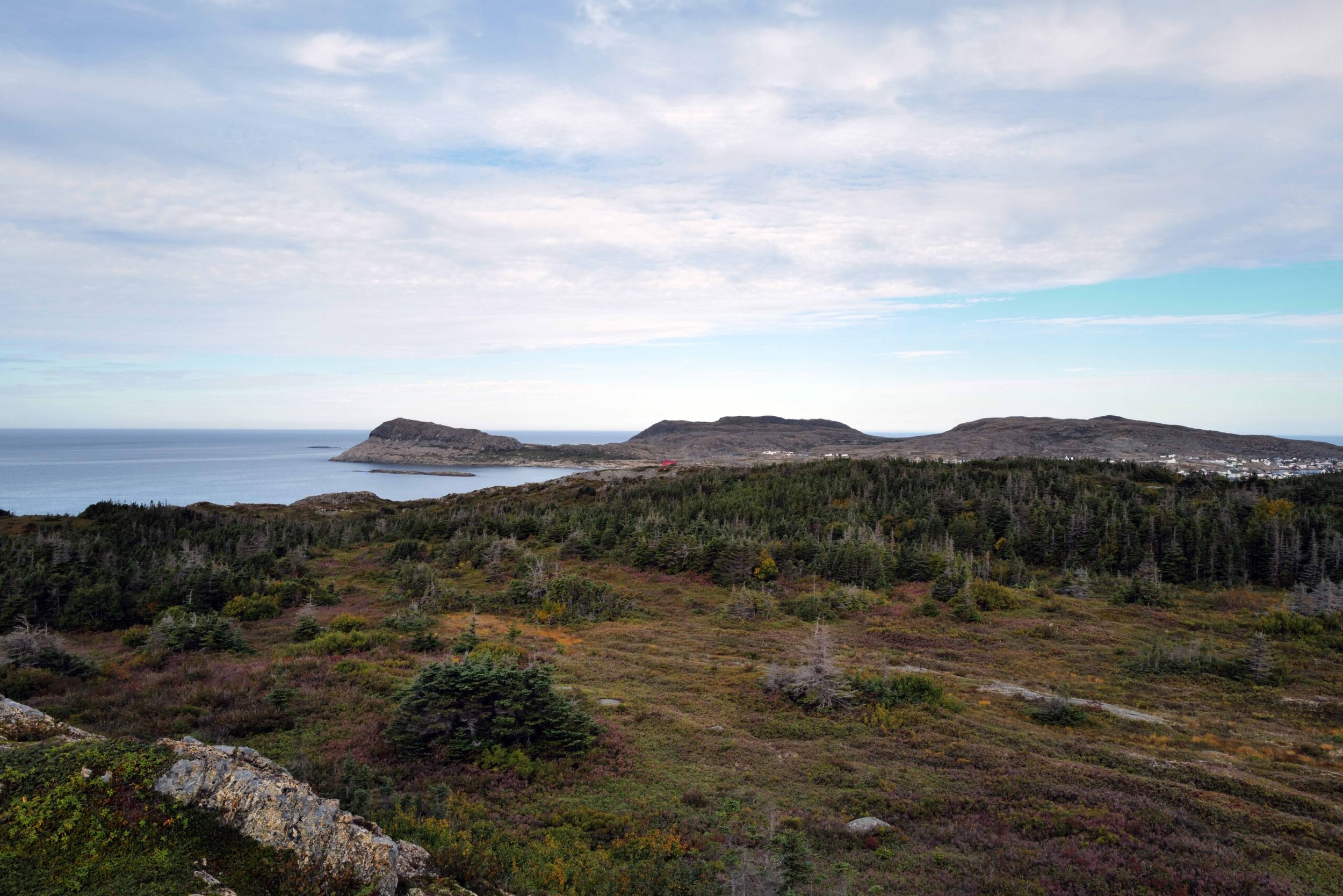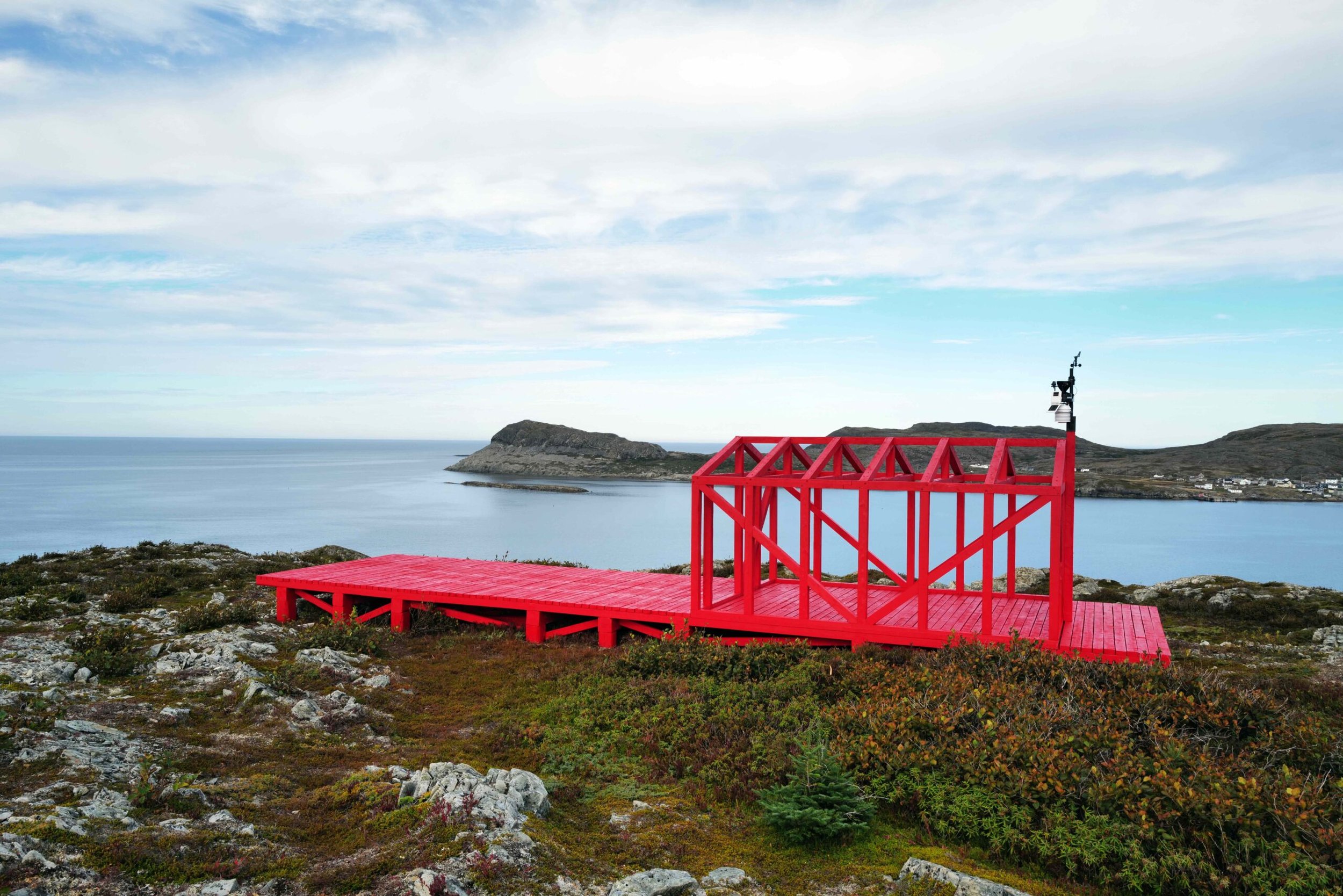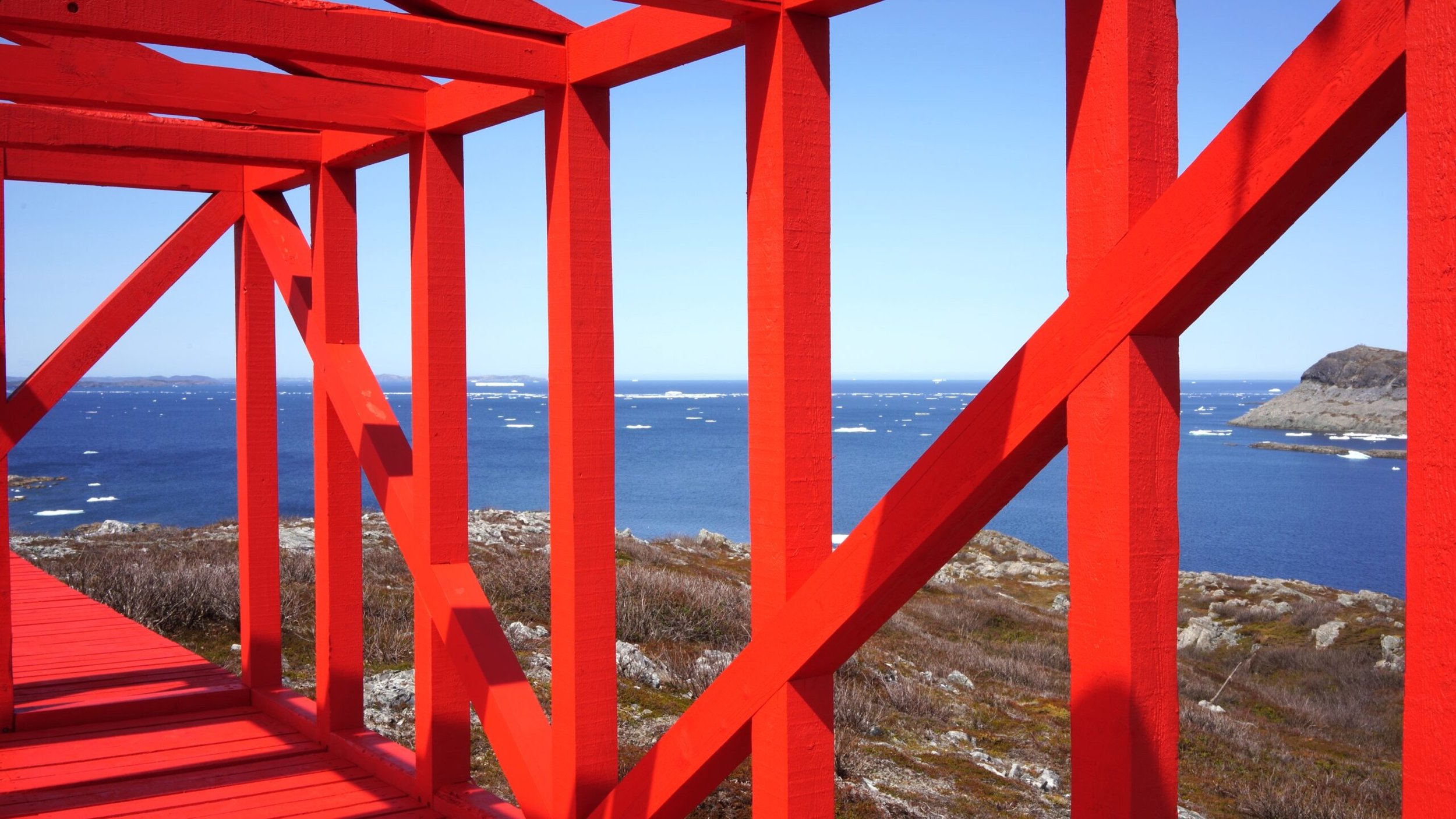Liam Gillick, A Variability Quantifier (The Fogo Island Red Weather Station), 2022
Liam Gillick
A Variability Quantifier (The Fogo Island Red Weather Station), 2022
A new commission curated by Claire Shea and Nicolaus Schafhausen of Fogo Island Arts in collaboration with Josée Drouin-Brisebois of the National Gallery of Canada.
Fogo Island, Newfoundland & Labrador, Canada
Liam Gillick’s A Variability Quantifier (The Fogo Island Red Weather Station), 2022 is an artwork intended to function as an operational weather station for Fogo Island. It gathers local weather data and is a place for education, reflection, and discussion. The site and work are open and people are encouraged to visit the weather station year round.
In reference to the traditional and primary industry on Fogo Island, the structure of the work quotes the traditional fishing stages found across Fogo Island, structures that are located at the water’s edge or “landwash” and were used to process fish in the production of salt cod for centuries, during Newfoundland’s participation in the inshore fishery.
As a functional weather station, it is gathering and reporting local weather conditions, tracking essential data that can be used in mapping the changing climate on Fogo Island and providing more accurate readings of the current weather conditions. Prior to its arrival, the weather conditions on Fogo Island were reliant on triangulated weather updates from Twillingate, approximately a hundred kilometres away. The Weather Station asserts the importance of connecting with local weather, especially as our climate because increasingly fragile.
“Fogo Islanders’ have a front row seat to changes in ‘Iceberg Alley. There is a lot of collective awareness and wisdom on this island. The artwork is about recognizing the daily consciousness of an island life; it is for and about the people of Fogo Island.” — Liam Gillick
Live weather information is available here: https://www.fogoislandweatherstation.com/
The Fogo Island Red Weather Station is a node within the World Weather Network, a constellation of weather stations set up by 28 arts agencies around the world. Since the Summer Solstice of 2022, artists, writers, and communities have been sharing observations, stories, reflections, and images about their local weather, creating an archipelago of voices and viewpoints about the changing climate.
The Fogo Island Red Weather Station was acquired by the National Gallery of Canada as part of its National Outreach initiative, in which artworks from the collection are sited and maintained at localities across the country.
Liam Gillick is an artist based in New York working across diverse forms, including installation, video and sound. A theorist, curator and educator as well as an artist, his wider body of work includes published essays and texts, lectures, curatorial and collaborative projects. Gillick’s work reflects upon conditions of production in a post-industrial landscape including the aesthetics of economy, labour and social organisation. His work exposes the dysfunctional aspects of a modernist legacy in terms of abstraction and architecture when framed within a globalized, neo-liberal consensus, and extends into structural rethinking of the exhibition as a form. He has produced a number of short films since the late 2000s which address the construction of the creative persona in light of the enduring mutability of the contemporary artist as a cultural figure.

Liam Gillick, A Variability Quantifier (aka The Fogo Island Red Weather Station)

Liam Gillick, A Variability Quantifier (aka The Fogo Island Red Weather Station)

Liam Gillick, A Variability Quantifier (aka The Fogo Island Red Weather Station)
